Core yoga for building stronger abs
This core yoga for building stronger abs sequence can improve your strength, power, and balance and help you avoid injury – find out how
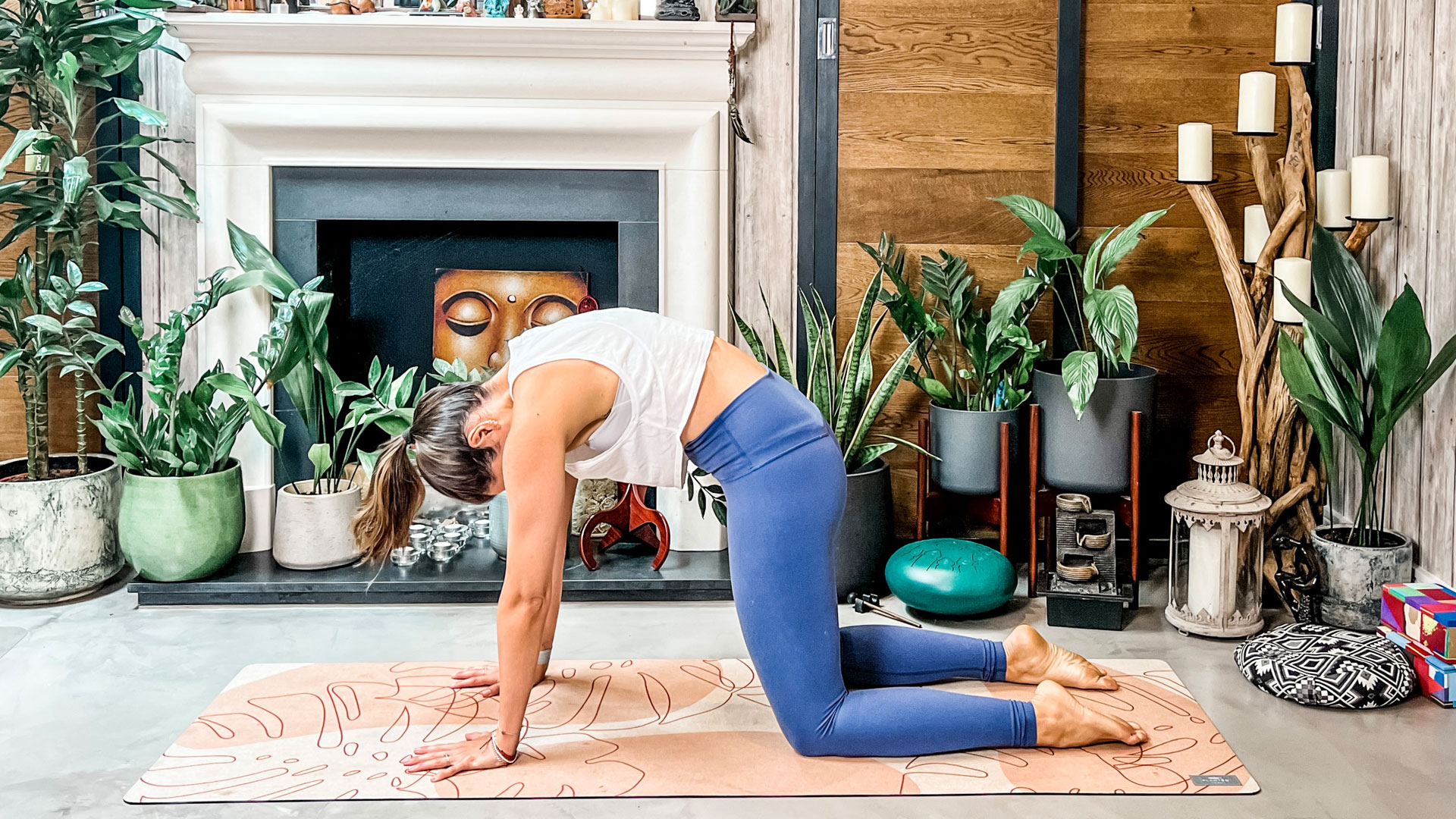
Core yoga for building stronger abs can also help eliminate lower back pain and pack power, strength, and stability into your torso instead.
When we think of how to get a stronger core, we often visualize rippling abs and honed midriffs as the definition of sculpted success. Your core is a complex engine comprised of an intricate network of muscles that hug around your torso and extend to your hips and glutes. These muscles pull together like a corset to help you move while stabilizing your lower back and spine, protecting you from injury, and even supporting posture and breath.
If you’re a yogi looking to become a pillar of strength, or even just starting out, then a core yoga sequence could help you get there. A study published in the International Journal of Yoga tells us that yoga asanas (poses) activate specific muscles that align, strengthen, and balance your body, enhance the control of your core stabilizing muscles, and reduce lower back pain and injury.
Discover the best yoga mats to plant your limbs on during practice, or read on to learn the benefits of core yoga for building stronger abs – according to a master yoga teacher – and a balancing flow sequence you can try to improve strength.
What are the benefits of core yoga?
“A strong core stabilizes your pelvis and back, which is essential in yoga as they support pretty much all postures,” explains yoga teacher Mariel Witmond, founder of movement platform Mindful Sonder.
“As much as it encourages the need for engagement, yoga is great for building your core, too. Unlike exercises such as traditional crunches, yoga practice will get you working every muscle in the core through twists, inversions, standing and balancing postures, and probably the best core strengthener – plank.”
Lorna Bailey, yoga teacher and founder of Anavrin says core work (in yogic terms) journeys through three diaphragms becoming energy locks, called Bandha’s.
Start your week with achievable workout ideas, health tips and wellbeing advice in your inbox.
- Pelvic work – Mula Bandha
- Main trunk and abdomen – Uddiyana bandha
- Top of the spine and core – Jalandhara bandha
“Focusing on core stability (isolation exercises) and core training (the abdomen as a whole) helps with inversions like handstand and shoulder stand, and improves stamina in poses like plank,” she says. “Knots (pockets of tension), and times when less productive muscles are being recruited in a pose, can stilt breathing. Through the correct use of core contraction with the inhale and exhale, the practitioner can meet asana in a gentler way, even holding a pose for longer. It also becomes a powerhouse center for lifting weights.”
Because core yoga taps into all planes of motion, it demands core engagement to practice safely. In turn, this strengthens and stabilizes your core and helps you progress. For example, a seated twist engages your obliques as you rotate, while standing postures like Warrior Two work your obliques and transverse abdominis to keep your torso stable. Folding poses are equally as impressive as they engage your rectus abdominis, and pranayama (breathwork) strengthens your diaphragm for calmer breathing.
Find the best abs workouts and core workouts for beginners to get your inspiration fired up, or read on for Witmond’s strengthening and balancing 9-move core yoga sequence.
Core yoga moves to try
“The following sequence will help to activate all of the core muscles from your pelvic floor (which often gets neglected) to your diaphragm,” explains Witmond. This core yoga sequence for building stronger abs can be done anywhere and at any yogi level.
“Though your core is seen as the center of balance and strength, it is also an energetic space and powerhouse where we explore our sense of confidence in the world,” adds Witmond. “If you build each pose from its foundation, you will find you are always working your core in yoga, and you can take the benefits with you when you step off the mat.”
Fire breath (kapalabhati)
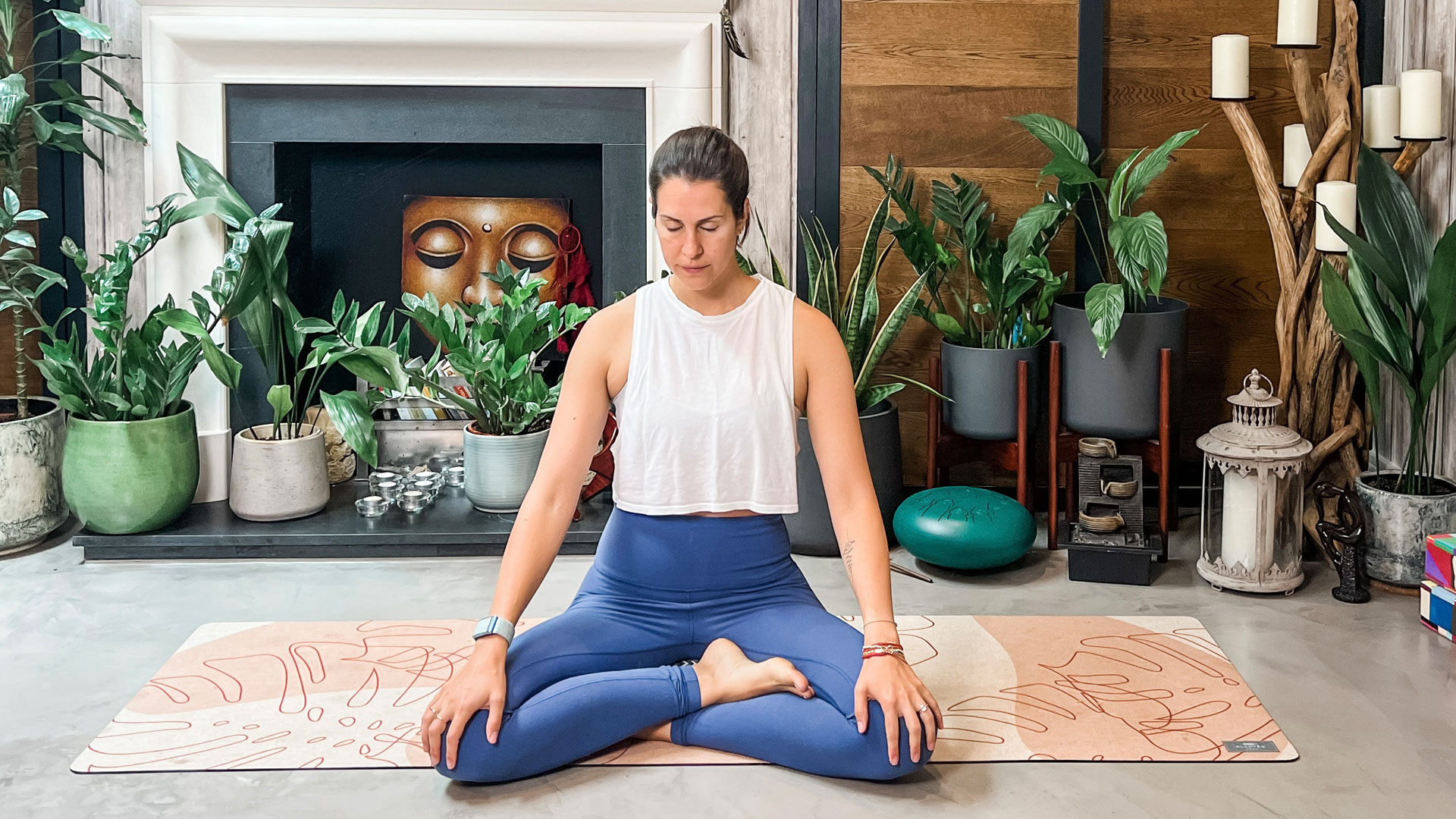
- Start seated on your mat in a cross-legged position. You can add a cushion under your sitting bones to help add elevation.
- Enable your knees to lower to the ground, then place your hands on your knees, and start to take some deep breaths in and out of the nose – drawing your awareness within.
- Keeping your spine tall, take a deep inhale, then exhale sharply and repeatedly so that you snap your belly inwards towards your spine, contracting your stomach muscles and short, passive inhalations. Once in a rhythm, you can increase speed to 2-3 breaths per second.
- After 30 seconds, return to normal breathing.
Expert tip: Engage your ujjayi breath to finish (a soft breath using nasal breathing with your mouth closed). You should hear a raspy sound at the back of your throat.
Cat Cow pose X5 breaths (transition)
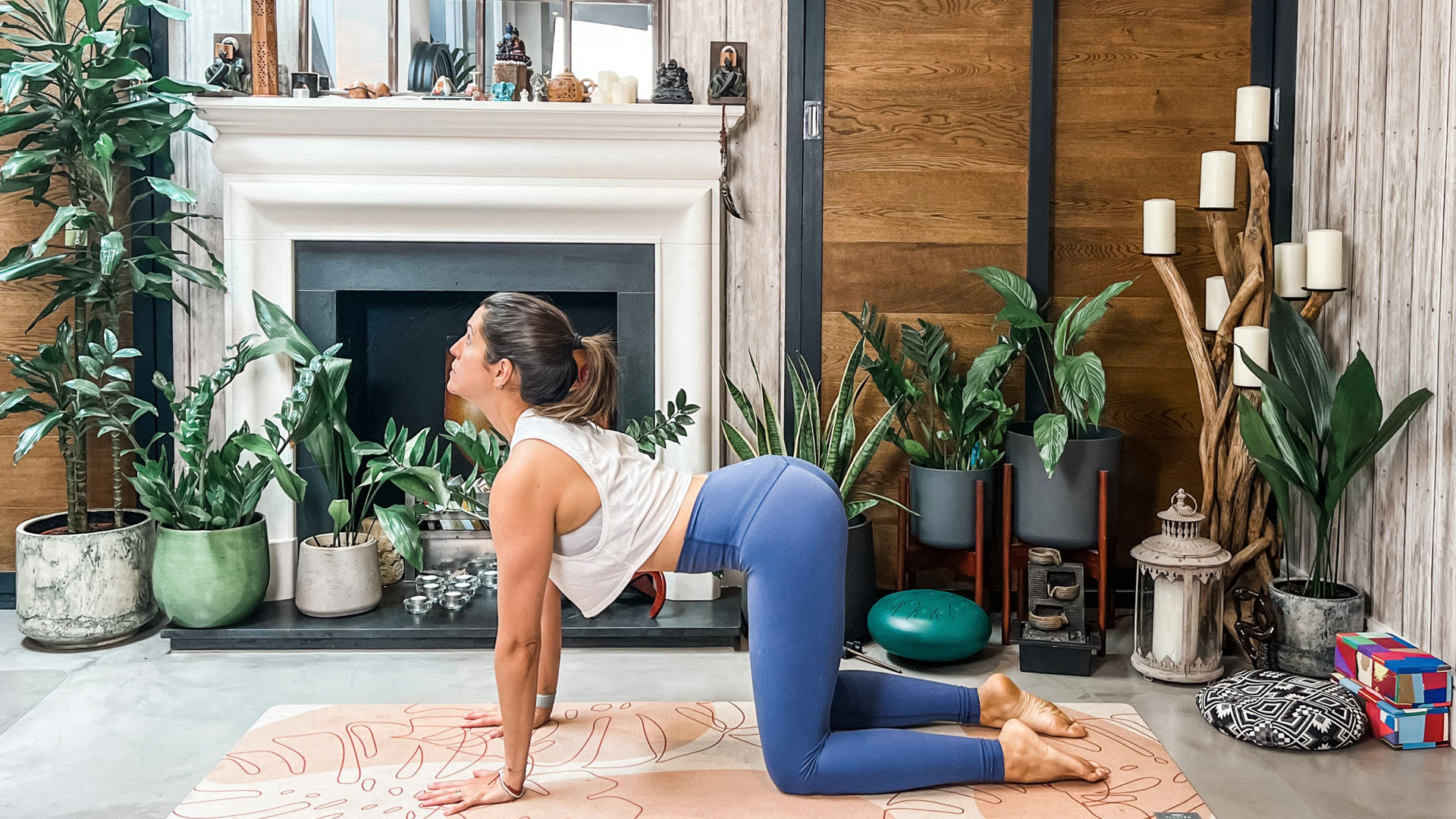
- Move into a tabletop position with your hands directly under your shoulders, shoulder distance apart, and knees directly under the hips, hip distance apart.
- As you inhale, drop your belly, tilt your tailbone, and lift your gaze as you draw your shoulders back and heart forward, finding your cow pose. Notice the stretch along the abdominal wall.
- As you exhale, round through your spine and draw your chin towards your chest, sucking your navel in towards your spine, and pushing the ground away into cat pose.
Plank (kumbhakasana) 30 seconds
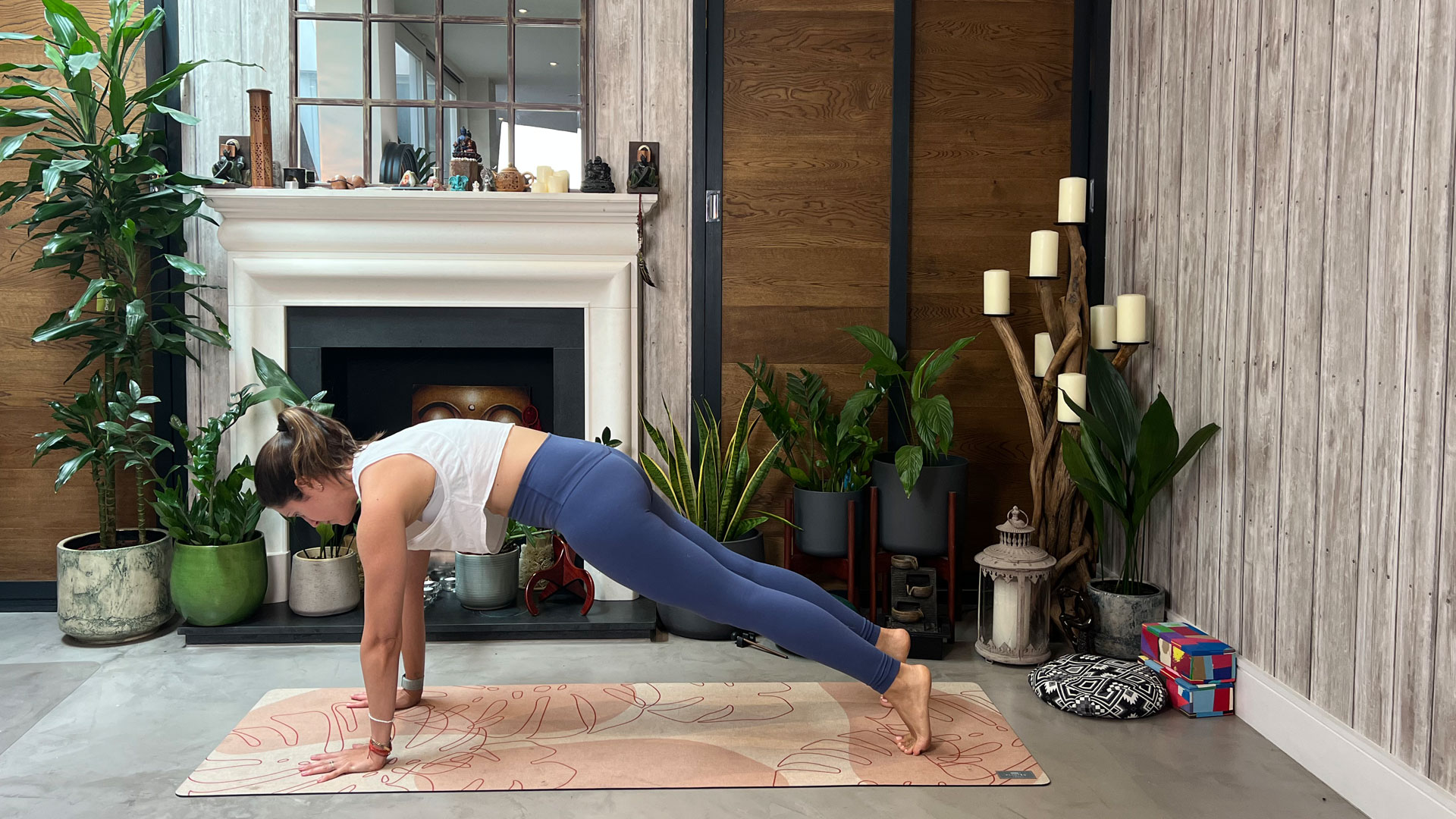
- Return to a neutral spine. Keep your hands and shoulders where they are, and walk your feet back into plank pose.
- Spread your fingers wide and push the ground away, protracting your shoulder blades (separating them) as you hug your navel towards your spine and squeeze your inner thighs. Keep your neck long and the crown of your head reaching forward as your heels drawback.
- Hold for 30 seconds, then lower your knees and press back into child’s pose.
Expert tip: If holding plank is too much on your wrists, lower on to your forearms instead. Plank offers a safer and more effective way to work your core by keeping your spine in position in an isometric hold, strengthening your entire core. Integration exercises that include other body parts do a much better job at building overall core strength.
Tiger pose 5-10 seconds per side
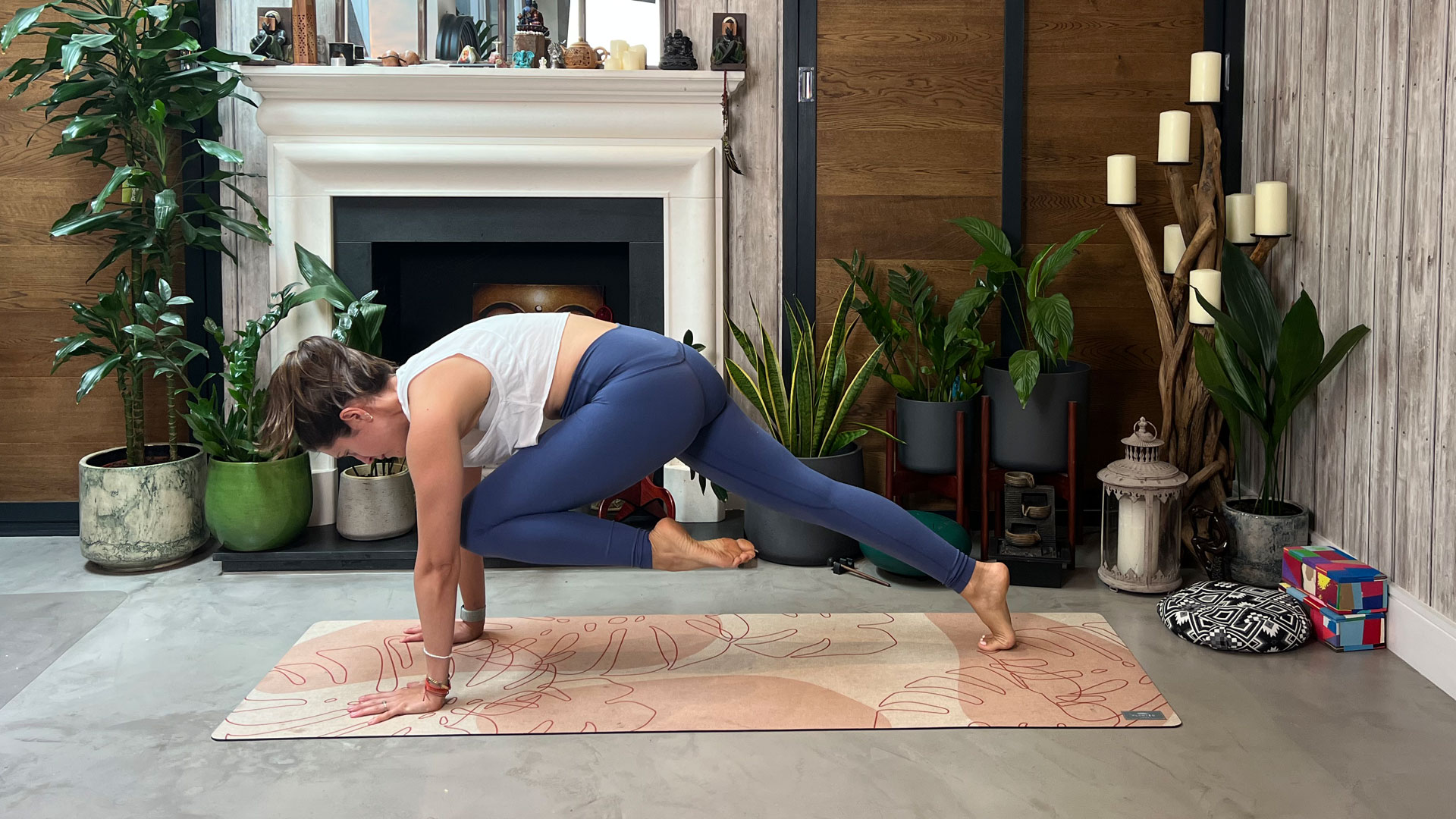
- Shift your weight forwards on your inhale as you move back through tabletop position.
- Tuck your toes and exhale to press back into downward-facing dog.
- Float your right leg to the sky on your next inhalation and exhale your knee to your nose in tiger pose.
Expert tip: Use the same alignment cues as in plank but keep lifting your knee, drawing your heel towards your bum. Create space by pushing the ground away while drawing your knee closer to your arms (more advanced students can try to take their knee through their arms).
Warrior III (Virabhadrasana III) x5 breaths
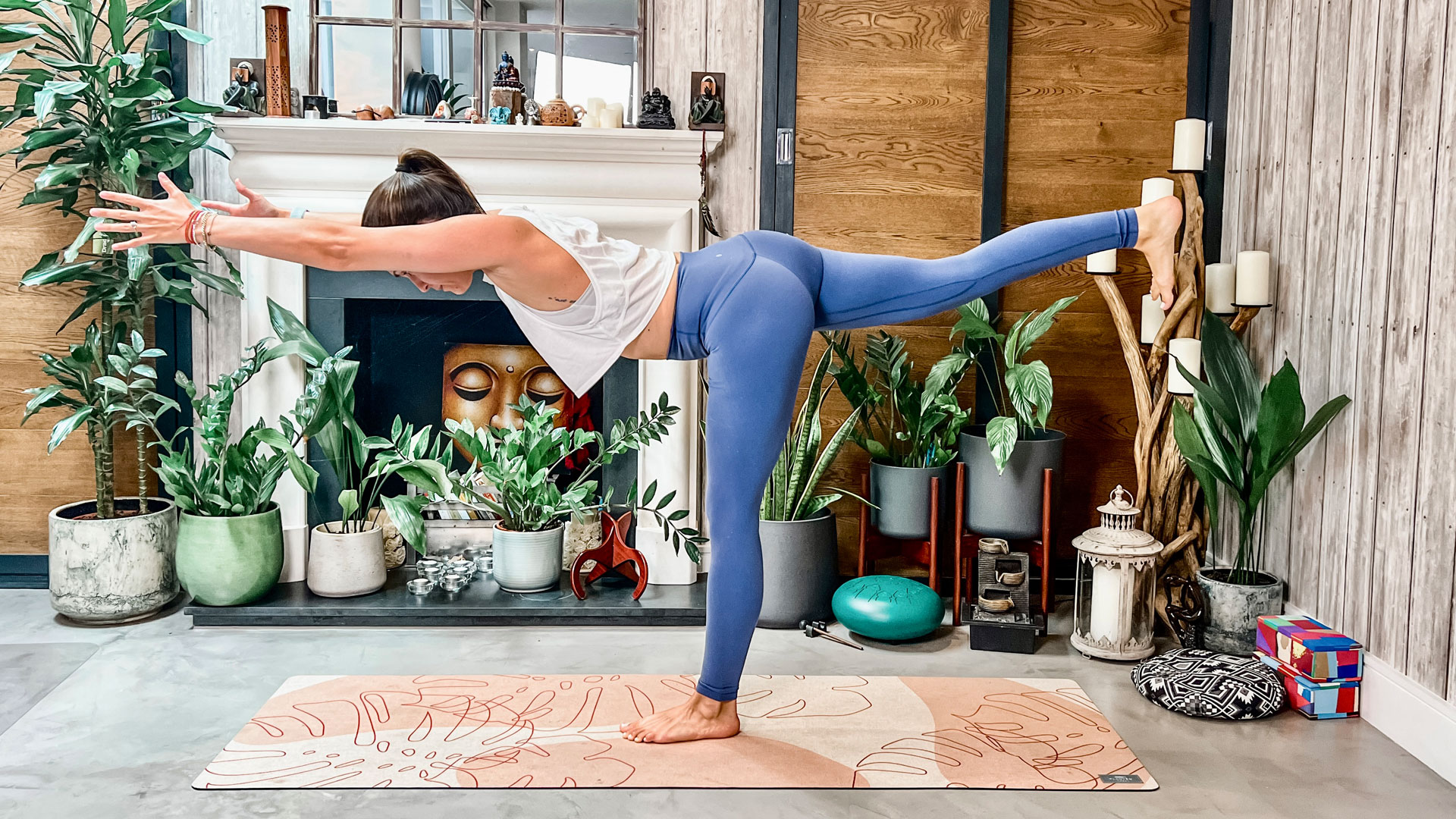
- Lightly step your foot to the top of your mat.
- Shift your weight forwards as you start to lift the back foot off of the ground into Warrior III. Ensure your hips are level, core is engaged, and your body creates a straight line from your left heel to the crown of your head.
- Stay here for five full breaths, then release your left foot next to your right at the top of your mat in a forward fold.
Expert tip: For increased core engagement, try to reach your arms forward and extend fully. If you struggle with lower back pain, you can bring your hands into prayer at your heart center or reach behind you.
Crow pose (Bakasana)
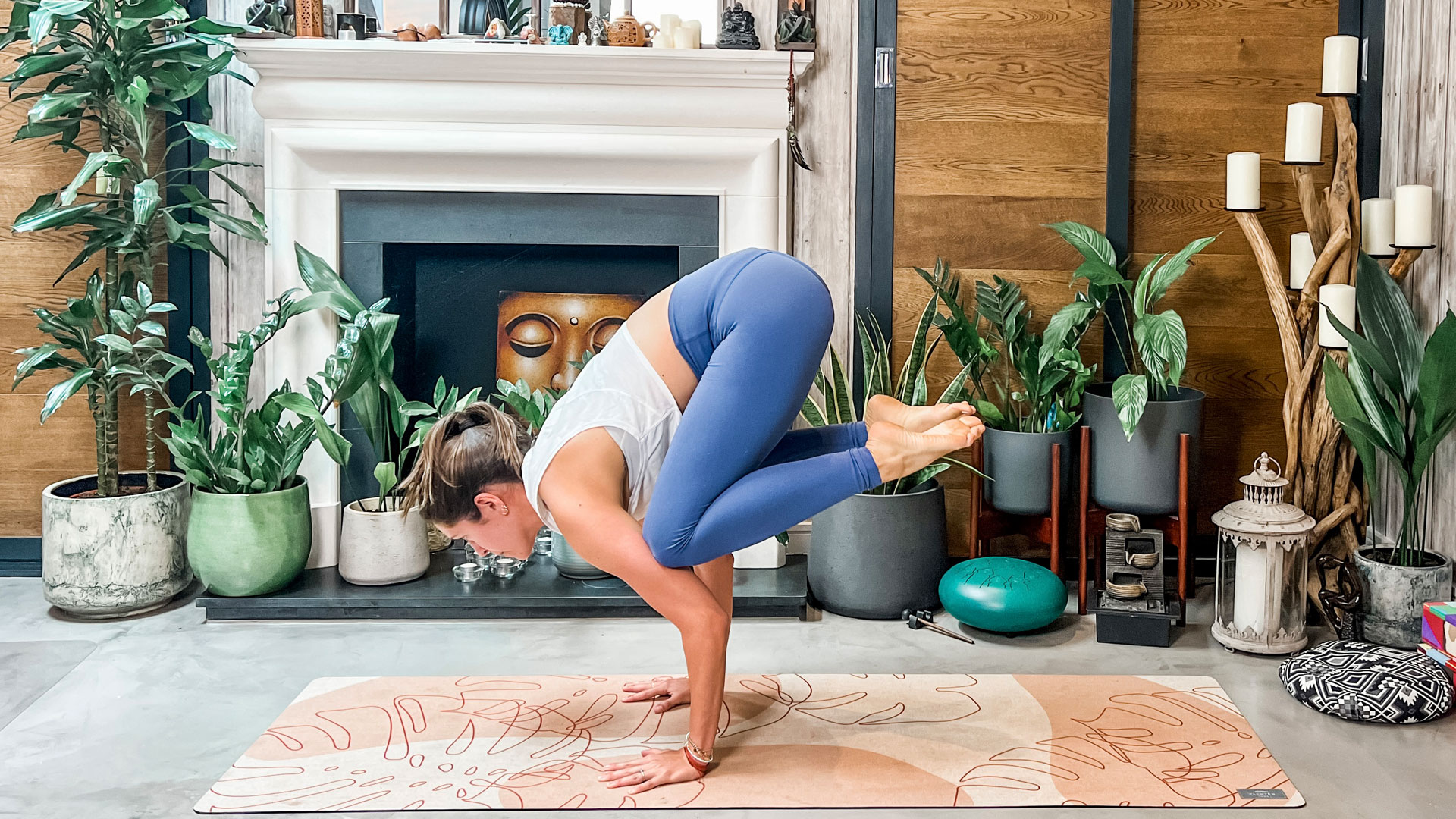
- From forward fold, draw your knees high up into the back of your arms as you shift your weight forwards into your hands.
- Create a deep c-curve in the spine and lift your heels towards your bum.
- Push the ground away and draw your navel in.
Expert tip: You can practice the foundations of this pose without lifting your feet off the ground or taking a few breaths in a yogic squat (Malasana) instead. You can also practice in a reclined position to activate core engagement.
Boat pose (Navasana) x5 breaths
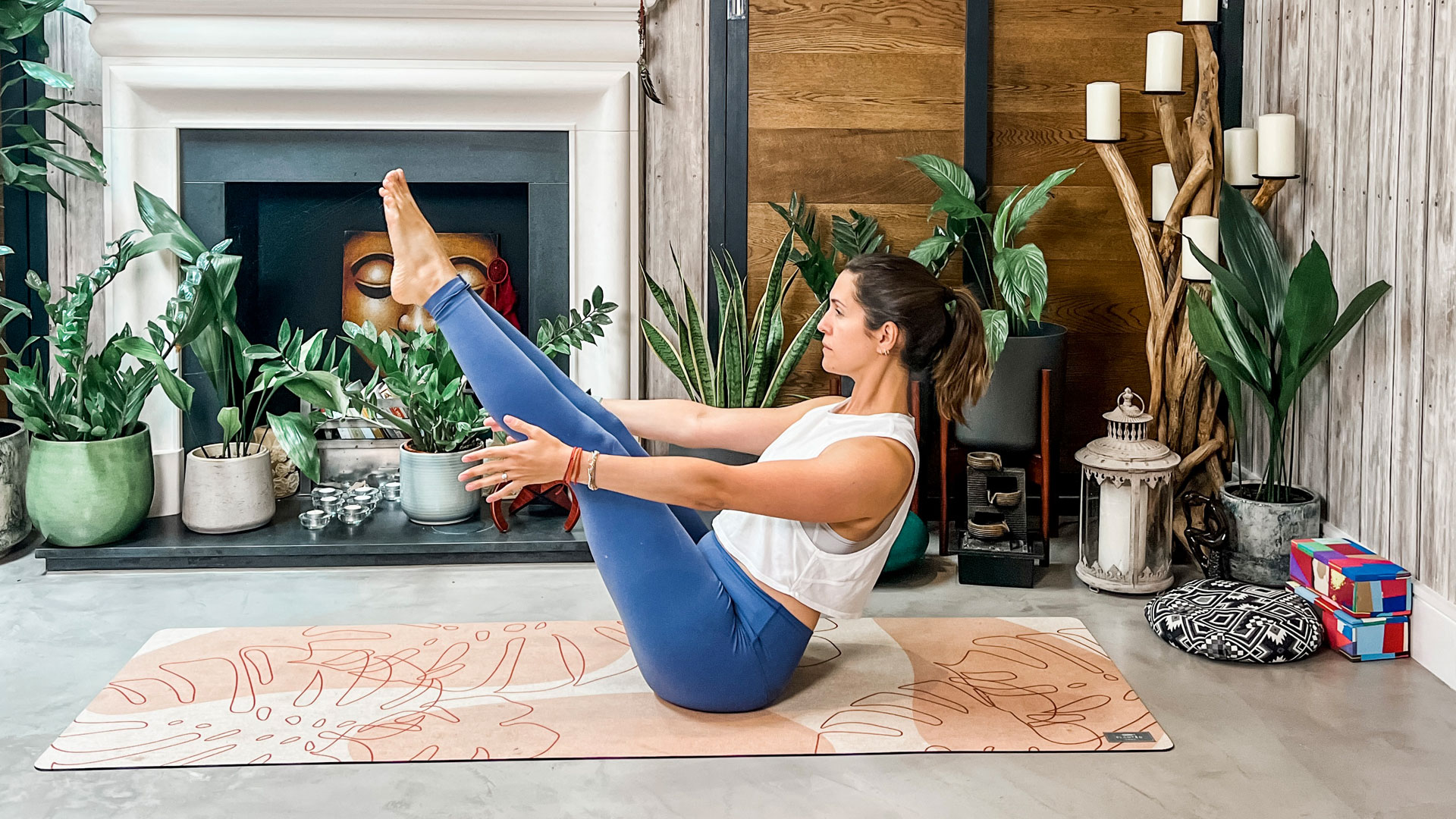
- Move through your vinyasa flow and repeat poses 4-6 on your left-hand side.
- From a downward-facing dog, lift your heels on your inhale, bend your knees, look between your hands, then, as you exhale, step, hop, or float through to a seated position.
- Keeping your spine long, bring your hands underneath your knees with shins parallel to the floor, and lift your legs.
- Release your hands and reach your arms forwards on either side of your knees.
Expert tip: Straighten both arms and legs as a progression.
Half lord of the fishes pose (Ardha Matsyandrasana) x5 breaths per side
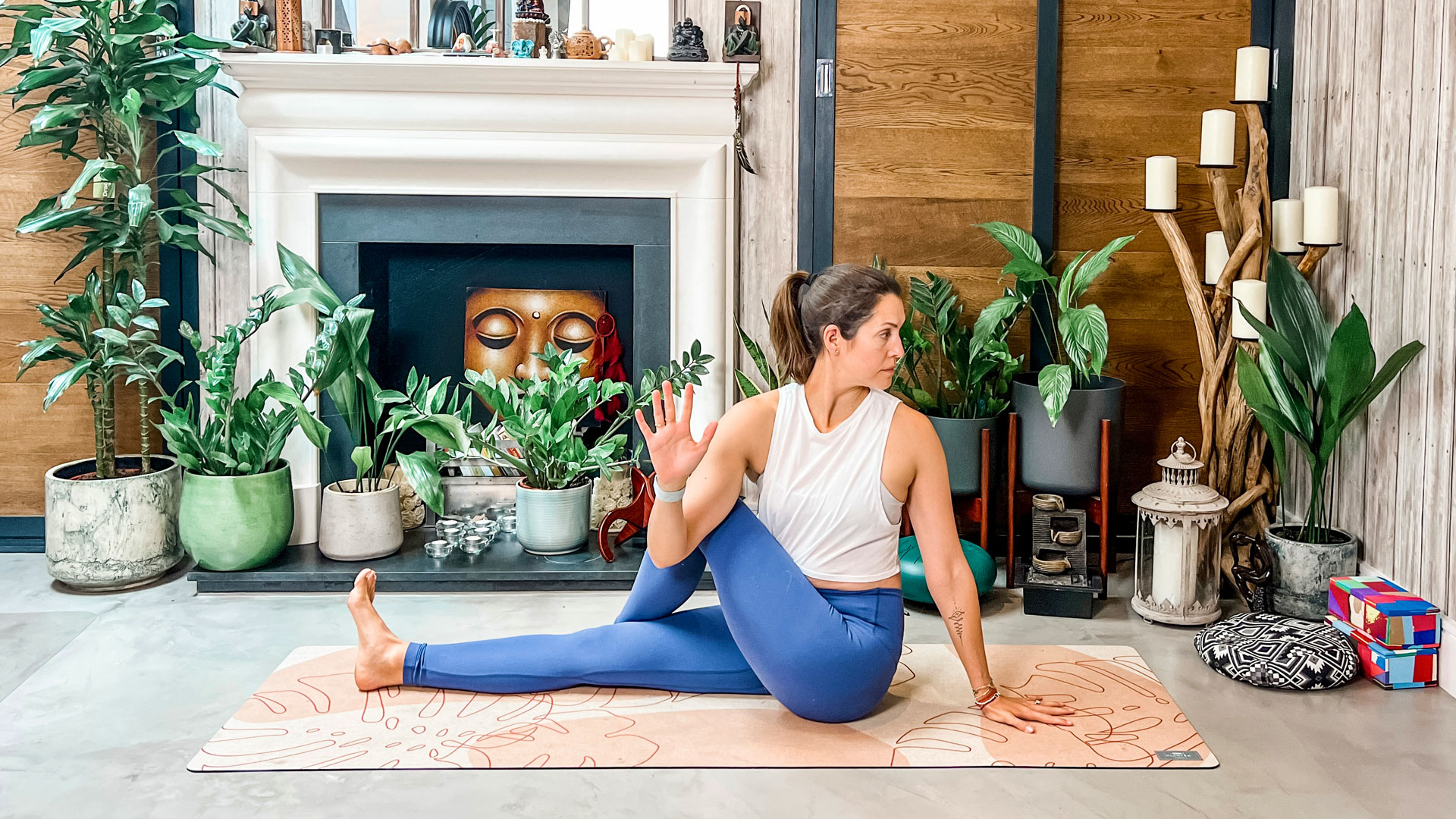
- Lower your feet to the ground and extend your left leg, placing your right foot outside your left knee (keep your right knee bent).
- Float your left arm to the sky and twist to the right as you bring your left elbow across your right knee and your right hand behind you.
- As you inhale, press into your sitting bones and grow tall.
- As you exhale, press your elbow into your knee and twist deeper.
- Finish five full breaths and take a counter twist by placing both hands to the left of your body and bowing your head to the ground. Repeat on the other side.
Finish your practice in the corpse pose (Savasana)
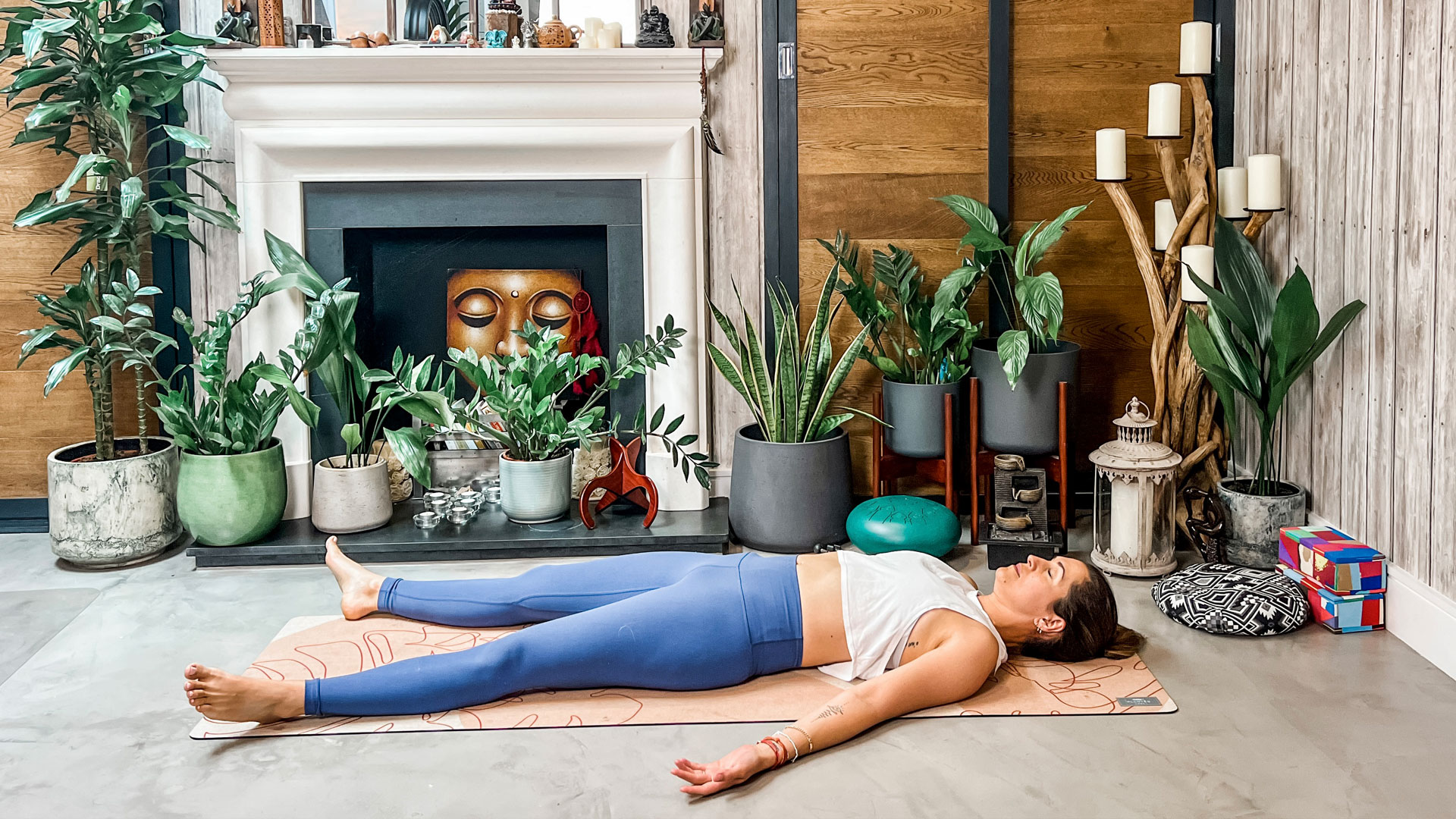
Why are core muscles important?
Your core consists of the famous rectus abdominis (your abs) and lesser-known muscles like your diaphragm, internal and external obliques, erector spinae, pelvic floor, transverse abdominis (inner abs), and multifidus (along the spine). Even your glutes and lats play a role in core strength, too. While it’s reasonable to dream about building a sinewed six-pack, working every core muscle group maximizes the benefits for your body.
Each of your core muscles has a job. For example, your obliques help you bend forwards and sideways and assist with side-to-side rotation and lower back protection, while your transverse abdominis keep your torso, spine, and pelvis upright. Working through all planes of motion – like side-to-side movement, rotation, and bending forwards and backward – mimics your typical day-to-day pattern and strengthens all aspects of your core.
According to the Mayo Clinic, a strong core trains muscles to work harmoniously and improves balance, stability, and posture. Improving movement efficiency, increasing endurance, and reducing your risk of injury can also supercharge sports performance and functional movement. The bonus? Reduced pressure on your lower back and joints helps you stay mobile and nimble!

Sam Hopes is a level III fitness trainer, level II reiki practitioner, and resident fitness writer at Future PLC, the publisher of Fit&Well. Having trained to work with both the mind and body, Sam is a big advocate of using mindfulness techniques in sport and aims to bring mental wellbeing to the forefront of fitness. She’s also passionate about the fundamentals of training and how we can build more sustainable training methods. You’ll find her writing about the importance of habit-building, nutrition, sleep, recovery, and workouts.
